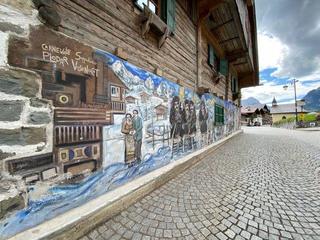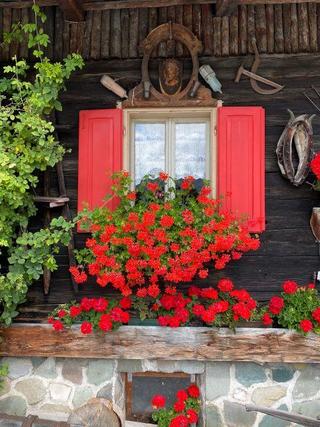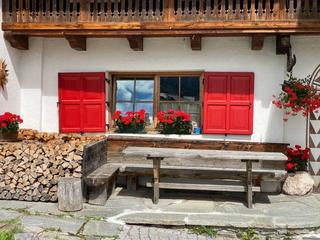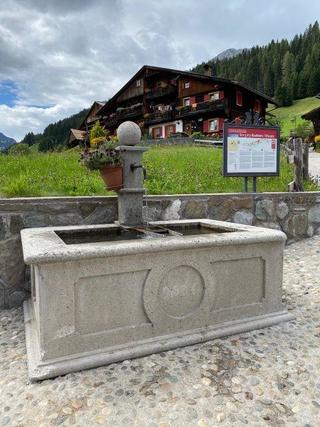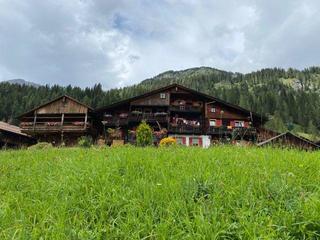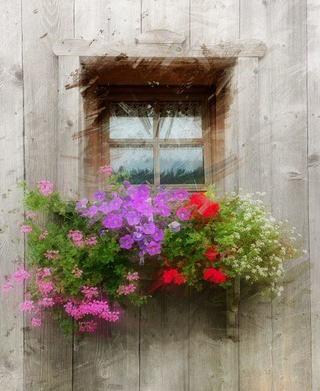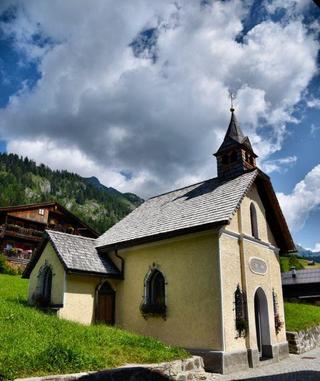
Kratten
Kratten village looks like a small cluster of houses well positioned on the sunny slopes overlooking the old road at the average altitude of 1250 m.
A small part of the locality expands downhill and crosses the old road; however, the 20th century urban development that took piace here left the layout of the village and its noteworthy architectu ral structures almost intact.
A small chapel, built in 1920 and dedicateci to the Virgin Mary of Lourdes, stands alone on the meadows, resting at the edge of the old road, like the chapels of the Bach and the Hoffe villages. A little farther East, a fountain marks the corner of the short road that leads to the highest houses of the village.
Slightly downhill from the old road, at the edge of the downward slope that merges into the new road skirting the Kratten stream, there is an extraordinarily rare example of kèisn, the characteristic drying rack for cereals. The only other surviving exam ple of this structure is a little farther West, on the open meadows of the nearby Fontana village.
Among the traditional wooden buildings located in the Kratten village, a special mention should goto the17th century s'Gottn Paurn house (1634): a mixed wooden-masonry residence that is one of the oldest documented buildings of Sappada. Just as noteworthy are the composite s'Chrischtn - s'Khrotars house, resulting from the combination of four heterogeneous portions, and the group of rustic buildings that forms the Northeastern edge of the village.
Also rather remarkable, finally, is the Beibar Sèffn - s'Chrischtn - s'Khrotars stable/hay-loft, whose facade is entirely built with wooden beams from the ground up.
